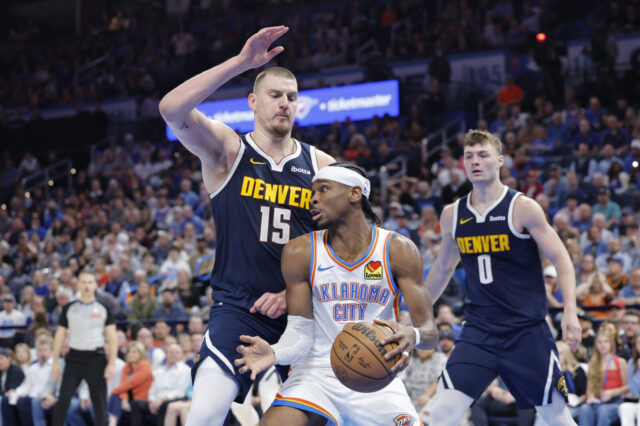As fans, we tend to look at athletes and cast our own perceptions and habits upon them. We often don't understand the pressure and people that consume their lives. We forget that players come from backgrounds that are foreign to our comforts (foreign to some of us). The pressure of competition and the need to belong to the group of elites they are surrounded by begs the question: Is there too much pressure on athletes and are the outlets to seek help feasible? It's easy for us to say, "Heck yes it is easy!" I have even gone as far as to say that these people are idiots and bad people. But then I look at how different their lives are from mine and I realize that the decisions they make are heavily influenced by others and how easy it is for me to cast a stone.
Ty Lawson’s recent string of incidents shows a lack of judgement coupled with a lack of responsibility. When Ty was pulled over earlier this year, a condition of his release was to not drink and drive. The events that transpired earlier this week went against that judgement. However, Lawson hasn’t been the only Nugget to be involved with illegal activity. Here is a history of Nuggets and run ins with the law:
David Thompson– The Skywalker himself, The man who once scored 73 points in a single game, a beacon of talent and a shining light for the Denver Nuggets. If there is anything sure in sports it is that nothing lasts forever. David Thompson was arguably on top of the NBA world, once upon a time. Easily able to lead, his phenomenal ability to score – he led the Nuggets to several successful seasons. However, the injury bug set in as David's heel ligament ruptured … this is when Thompson's behavior and career turned downward as this is when his drug use became an obstacle.
His use of cocaine and other drugs were mild at first, but then began to effect his career. His behavior turned irrational and disruptive (showing up late to practices, not showing up to practices, butting heads with Doug Moe) and led to him getting traded to the Supersonics (in exchange for Bill Hanzlik and a first round pick). Eventually nagging injuries got worse, there was an incident at the Studio 54 Night Club in '84, and more – detailed here:
He is a recovering addict who entered a rehabilitation center in Boulder, Colo., in 1983; who was involved in an incident in New York's Studio 54 in 1984; who was arrested for public intoxication in a topless bar in Indianapolis in 1985; who was charged with an assault on his wife, Kathy, in 1986 after a second period in a rehabilitation center.
Eventually, his once-shining star fell completely. A four-month jail sentence in Seattle stemming from the assault on his wife was suspended, provided he attend counseling sessions. He did not attend. On April 28, 1987, he was jailed.
"That's when I hit bottom," Thompson said softly. "I had a lot of hours to reflect on where I had been, where I was. And I had nowhere else to go but up. I couldn't go any lower than that."
Eventually, once Thompson figured some things out, he wanted to attempt an NBA comeback. The ligament damage already done became too severe to attempt a comeback, drugs consumed a once promising career, and relapses kept Thompson hitting the restart button. After successfully completing a rehab stint, David eventually returned to college to get his degree in sociology and was later inducted into the NBA Hall of Fame. His jersey was also retired by the Denver Nuggets.
Chris Herren– Drafting a player who failed three drug tests in college is usually a red flag. That didn’t stop the Nuggets from selecting him in the 2nd round in the 1999 NBA draft. While his career with the Denver Nuggets was short (he played just 45 games in one season with the Nuggets before being traded to the Celtics) his drug use while in the NBA led to arrests and charges after his career was over. Herren, who grew up with a party hard mentality, started off using pain killers to deal with injuries sustained in the NBA. This led Chris into using other drugs such as heroin and crystal meth. His drug use took him over the edge as a heroin overdose caused him to lose control of the car he was driving and he crashed. After surviving the accident, Chris entered an intense rehabilitation program and has been drug free since 2008. You can read about his battle with various issues in the book Basketball Junkie.
Chris Andersen– The D-League call up, turned fan favorite, turned NBA Champion. Andersen’s journey to the NBA is one to be admired. He started from a small college and worked his tail off to get to the NBA. A big, goofy looking, but hard working player who became easy to root for, Andersen was, and remains, a household name with Nuggets fans. He left the Nuggets and went to the Hornets as a free agent in 2004, it was there that his career took a radical turn for the worse. Andersen violated the league’s drug policy by failing a drug test for the fourth time. He was banned by the NBA for two years, two long years of watching everything he had worked for go to pieces. He continued to work and made a fantastic return to the NBA and to the Denver Nuggets. He helped the Nuggets get to the Western Conference Finals, and even helped LeBron James win another championship.
**
As with any drug abuse the use starts out small and begins to build in your body and in your mind. It becomes second nature and it becomes, you. This is not to say that Ty Lawson has problems with drug abuse, rather to suggest that problems left unattended could become something much worse. Irresponsible decisions could cost Ty in the long run. I hope for the best outcome for Ty, and I hope that he seeks and surrounds himself with outlets to help him change for the better. As is apparent with the players listed above, Lawson may be down, but Ty ain't out. Ty can turn this around but that is on Ty.


